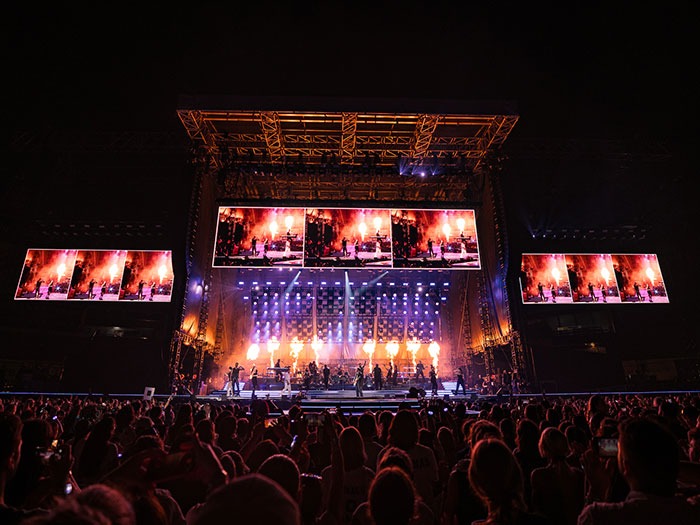Community, Leadership, Experimentation, Diversity, & Education
Pittsburgh Arts, Regional Theatre, New Work, Producing, Copyright, Labor Unions,
New Products, Coping Skills, J-O-Bs...
Theatre industry news, University & School of Drama Announcements, plus occasional course support for
Carnegie Mellon School of Drama Faculty, Staff, Students, and Alumni.
CMU School of Drama
Tuesday, March 12, 2024
Vari-Lite for Jonas Brothers
TPi: One unique issue for the design was the 360-degree seating environment. “The biggest challenge was the dichotomy between needing a suitably scaled wall of lights and the fact that the tour was sold 360,” explained Reardon. To achieve the look, Reardon used pods of VL5LED Wash luminaires connected to a motion control system that could pull the rig out of the way when the band moved to the B Stage.
Subscribe to:
Post Comments (Atom)

2 comments:
This article made me think about what it means for a light to be a workhorse in 2024. We are at a point in technology where we can have a light that can do almost whatever you ask it to do, but there are still certain lights that are best for certain things. I think the best example of the breakdown here is profile, wash, and FX fixtures. Modern profiles have gotten pretty good at being able to serve as all 3, but a dedicated FX fixture like the High End Systems shapeshifter are not going to be very useful to put keylight on a performer, but they can do incredible things in haze. Something like a vl3600 is going to be a great key light and it can make some interesting arial effects but it is much more limited in what it can do than a dedicated fixture. It does seem like there is more overlap between wash and effects fixtures or wash and profile fixtures, than profile and effects fixtures.
Concert lighting never ceases to both excite and overwhelm me. The commentary on how the lights had to be stormproof is so interesting to me. I’m far from an engineer but the way moving lights today are so fickle but also so indestructible in terms of wear and tear are fascinating. Additionally, how weather affects lighting and how the visuals look is something this article has made me want to explore more. How does rain distort lighting and is this something that concert designers need to take into account? Additionally, the 360-seat view and how that interacts with lights is interesting. Lights undeniably take up space, and thus, easily can create poor sight lines. This is especially true when seats are 360 but the performers are only facing one direction. I’m curious as to why they chose to sell 360 and if that choice greatly affected the design. Were these seats valued or are they “nosebleeds”? This article also reminded me that I should become more aware of lighting fixture vocabulary. Each fixture is unique.
Post a Comment